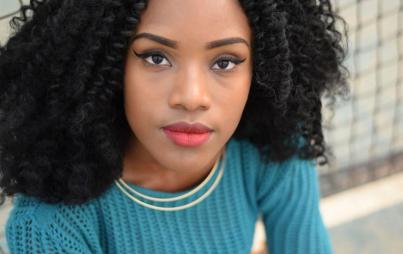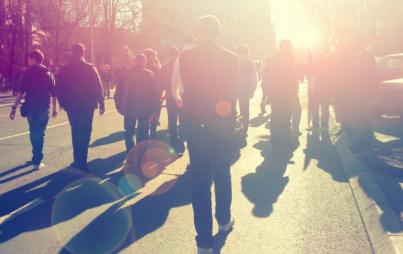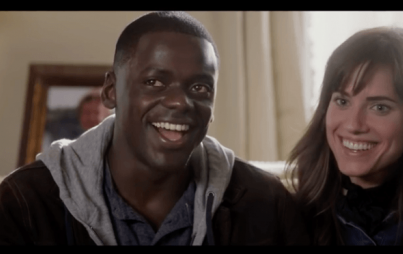
Image: Thinkstock
It was a steamy afternoon in Richmond, Virginia, but not as suffocatingly hot and humid as it had been. Summer was fading into fall and the bugs were becoming less and less plentiful by the day. The river hummed with fewer swimmers and inner-tubers and beer-can crushers than in weeks prior.
But instead of lounging by the James, I was hustling hard to get employed.
I had taken the semester off because the course I needed to graduate wouldn’t be offered again until the spring. This was the time to earn money, which, for me, meant freelance writing, selling my art, and piling on the entertainment gigs. I was already booked up in the first two categories, but needed more of the third.
That’s why I reached out to a dinner theatre company in town to ask for an interview and audition. The owner said yes and I had to make a good impression if I was going to meet my end-of-year financial goals.
So I parked at the building where I was scheduled to meet the owner and somehow navigated the maze of offices there. When I arrived at the suite, I knocked timidly on the door. The owner — a short, gray-haired, blue-eyed white man with rectangular glasses — answered and guided me to a chair across from his desk as we chatted.
The interview went pleasantly enough until a silence fell between us. It wasn’t an awkward one, just a natural moment of quiet as neither person had anything to say.
The man broke it with, “So, what are you?”
I knew what he was asking, but I was annoyed and decided to play dumb. “What do you mean?”
“What, um, race are you?”
I detected no malice in his voice and sensed that his question came from a place of genuine curiosity, not racist judgment. (Truly vile racists use this question to mean, “Just how much should I hate you?”)
Still, it was a matter I preferred to bring up myself if it was relevant to the conversation. I didn’t appreciate other people asking, especially if we weren’t discussing racial identity, politics, or history.
Society already has a problem of regularly pressuring biracial people like me to “pick a side.” It’s not like the theatre owner and I were even talking about casting, which is a topic that frequently involves race.
But once the owner asked, I felt compelled to answer, and I did. My mother is a mestiza from Central America and my father is a white American. (I needed this job, even if I didn’t need the theatre owner’s nosiness.)
Prior to 1967, my parents’ marriage would not have been legal in Virginia.
That was the year of the landmark Loving v. Virginia case, when the U.S. Supreme Court declared the state’s Racial Integrity Act of 1924 unconstitutional. The act was an anti-miscegenation regulation that prevented whites from marrying non-whites.
In Loving v. Virginia, which is now the subject of the new movie Loving, a white man named Richard Loving asserted his right to stay married to Mildred Loving, a woman of African-American and Rappahannock Native American descent. (The couple had married in Washington, D.C., where interracial marriage was legal.)
The Loving story is a devastating one, especially when you learn about how miserable the police and neighbors tried to make their lives, but it is ultimately a story of triumph.
Thanks to the Lovings’ struggle, interracial marriage has been legal in Virginia for decades.
That doesn’t mean everybody approves, of course. And that makes it complicated to be a mixed-race person here, even today. Fielding off-putting questions and comments is a regular part of the mixed-race experience around the world. Yet this social phenomenon is especially common in places with a legacy of institutionalized and cultural racism. That includes the South.
In her article, “7 Ridiculous Things Not to Say to Mixed Race People,” Maya Gittelman sums up the comments we are all too accustomed to hearing. In Virginia, I heard every single one of these comments, not just once, but often:
1. What are you?
2. That’s so cool!
3. That’s so hot!
4. Everybody should/will be more like you one day.
5. I knew I saw some [fill in the blank] in you!
6. You don’t count/You’re not really [fill in the blank].
7. I can’t even tell!
If it’s not obvious why these comments are inappropriate (which is fine, but do your part to educate yourself), Gittelman’s article does a great job of explaining the reasons for their offensiveness.
Gittelman also points out the different levels of oppression and discrimination that mixed race people face. In the South, this is particularly important to mention. Being a light-skinned, non-black mixed race person like I am can be uncomfortable there, but it is not dangerous the way being black in the South is dangerous. You cannot even begin to compare the two.
When I worried about my personal safety in Virginia, I mostly worried about my safety as a woman. Like any woman, I knew that catcalling, gender discrimination, sexual harassment, rape, and kidnapping could happen in any given day.
Perhaps I was slightly more at risk than a white woman because of exotification (Latinas are still rare in much of Dixie), but it was hard to tell what men were lusting after when they targeted me. Was it my female body, my mixed race body, or both?
It was only obvious that my racial background was a factor when men specifically mentioned it.
Many of us in the mixed-race crowd have one white parent or grandparent, and because of that, many of us have relatively light skin. Most mixed-race people I have met, regardless of their particular racial background, have some shade of olive skin.
Though we may not have a peaches-and-cream complexion, many of us would pass the Jim Crow South’s paper brown test — whereby people who were darker than a brown paper bag were historically considered “coloreds” and therefore subject to gruesome laws.
The most vile racists may call us “swarthy” and “mutts” and hate us because we’re “products of a sinful union,” but we’re lower on their hate list. This matters because, as rude or awkward or hurtful as people who don’t understand us may be, we are not black. The exception, of course: mixed-race people with one black parent. Such people who grew up in the South have a distinct mixed-race experience, which is not one I can claim to know firsthand.
What I do know firsthand is that our country still is not a place where black people are truly treated equally, and that fact is even more painfully obvious in the South.
Accepting our privilege as non-black mixed-race people is an even higher priority when we live in cities where we see black people actively oppressed. In Southern cities, the legacy of institutionalized racism is still alive and well.
If you disagree with that statement, then I beg you to answer these questions:
Why does my former home of Richmond, Virginia have a whole avenue full of Confederate general statues?
Why did people make such a fuss when a statue of black tennis player Arthur Ashe was finally added to the avenue in 1996?
Why is the matter of flying the Confederate flag in public places instead of keeping it in museums even be up for discussion?
Why are all of the poorest neighborhoods black and why are so many of them full of people living at or below the poverty line?
Why do all of the poorly funded and poorest performing public schools all have a black-majority student population?
All of us have a duty to recognize different levels of oppression and do our part to minimize oppression in all of its forms.
Learning more about mixed-race oppression is something many people must add to their to-do list. But something all non-black mixed-race people need to do is accept our privilege.
This can be a challenge when we’re grappling with our own oppression (and witnessing our non-white parents' or grandparents' oppression), but it’s our duty regardless. It is MY duty.
This is why I said it when I was living in Virginia, and I say it now as New York resident: Black lives matter.







